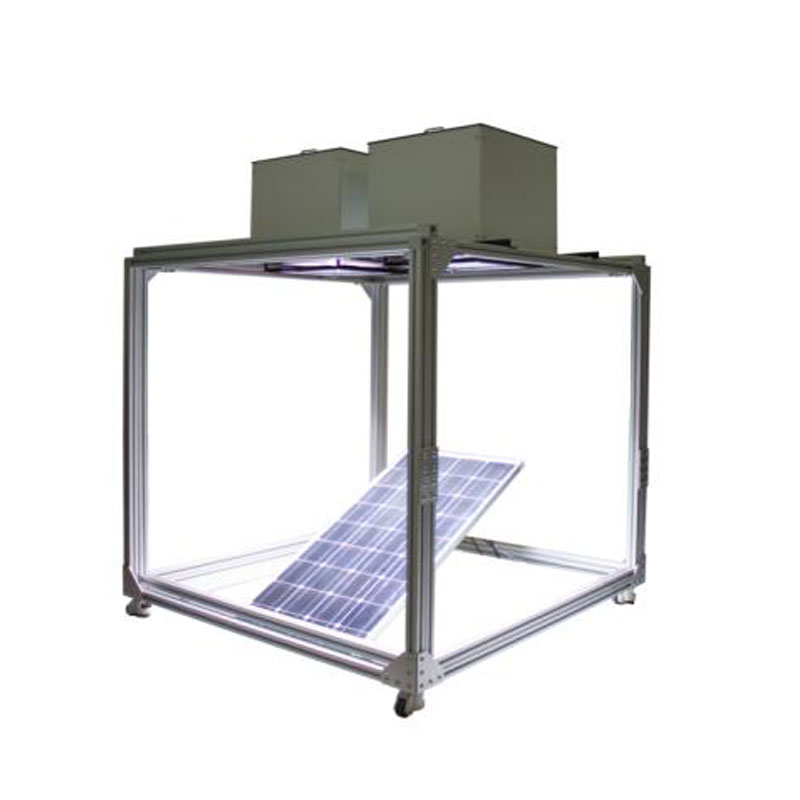Tianqiong Sensor IOT Technology Co., Ltd
Sales Manager:Ms. Emily Wang
Cel,Whatsapp,Wechat:+86 15898932201
Email:info@fengtutec.com
Add:No. 155 Optoelectronic Industry Accelerator, Gaoxin District, Weifang, Shandong, China

Sales Manager:Ms. Emily Wang
Cel,Whatsapp,Wechat:+86 15898932201
Email:info@fengtutec.com
Add:No. 155 Optoelectronic Industry Accelerator, Gaoxin District, Weifang, Shandong, China

Model:FT-MT1
Brand:tianqiong
1.Solar simulation systems product overview
Solar simulation systems are light sources with specialized characteristics that provide the closest spectral match to the available sun.Solar simulation systems provide an environment close to natural sunlight, achieving 24-hour uninterrupted light without being affected by environmental, climate and time.Widely used in solar cell characteristic testing, dye-sensitized batteries (DSSC), perovskite batteries (PSC), photoelectric material characteristic testing, biochemistry-related testing, accelerated research on optical catalytic degradation, skin cosmetics testing and environmental research.
2.Product features of Solar simulation systems
1.Advanced intelligent adjustment of irradiation intensity can be adjusted according to experimental requirements and time-sharing according to experimental stages.
2.The light direction is vertically upward and downward, horizontally left and right.Irradiation in all directions.
3.Customize the irradiation area according to the needs of 1-100 square meters
4.Three intelligent controls: can be controlled manually, can be controlled by the client, and can be controlled by the cloud.
5.Fan power-off delay function.After shutting down, the equipment cooling system will delay power off, and there is no need to be left behind manually, saving working time and improving the service life of the equipment.
6.Extra-long service life: The lifespan of the lamp is more than 2,000 hours.
3.Solar simulation systems technical indicators
| name | Technical Specifications |
| Irradiation area | 1~100 square meters, customized according to experimental requirements |
| Light source type | Long arc pulse xenon lamp |
| Light inhomogeneity | ±10% |
| Light instability | ±10% |
| Spectral distribution | Class B |
| Control method | Manual, client, and cloud control |
| Cooling method | Delayed air cooling |
| Working environment | Ambient temperature: -20~40℃, relative humidity: ≦70% |
| Power supply method | AC380V, three-phase five-wire inlet |
| Lamp life | 2000 hours |
| Lighting direction | Vertical upwards downwards, horizontally left to right |
| Radiation intensity | 400~1800 W/m2 |
| Light source output | Parallel light illumination |
Reservoirs are important projects for water resource regulation, and discharge operations directly affect the hydrological conditions of downstream rivers. Discharge is usually divided into different situations such as regular discharge, flood control discharge and emergency discharge. Regular disch...
In the field of geological hazard monitoring and early warning (such as landslides, collapses, ground subsidence, debris flows, etc.), GNSS monitoring stations are a core technical means used for accurately measuring surface displacement and deformation.GNSS equipment precisely determines its absolu...
Portable Weather Station is a highly integrated, low-power, and rapidly deployable high-precision automatic meteorological observation device. It is suitable for various scenarios such as emergency short-term meteorological observation, mobile meteorological monitoring, and microclimate environment monitoring. It is primarily used for data acquisition in fields such as meteorology, agriculture and forestry, environmental protection, and emergency monitoring....
Since ancient times, agriculture has been the industry most closely tied to natural conditions, with "relying on heaven for food" being the most authentic portrayal of farmers. Traditional agricultural production heavily relies on personal experience and passed-down farming proverbs to pre...